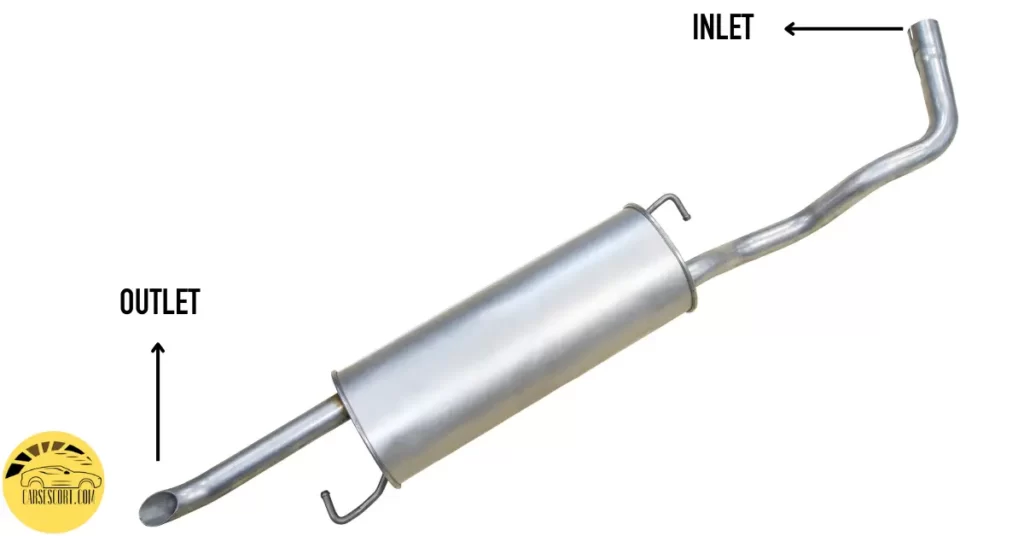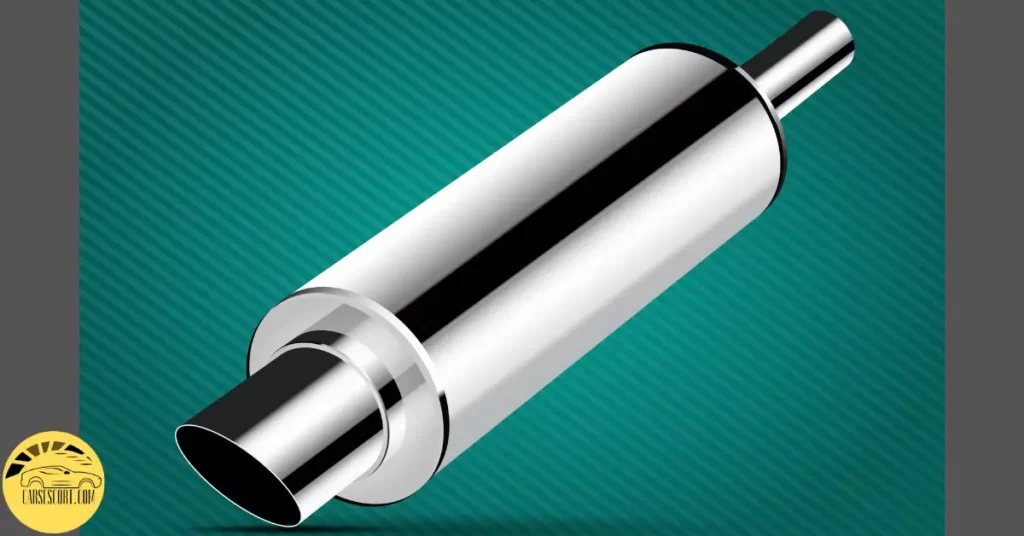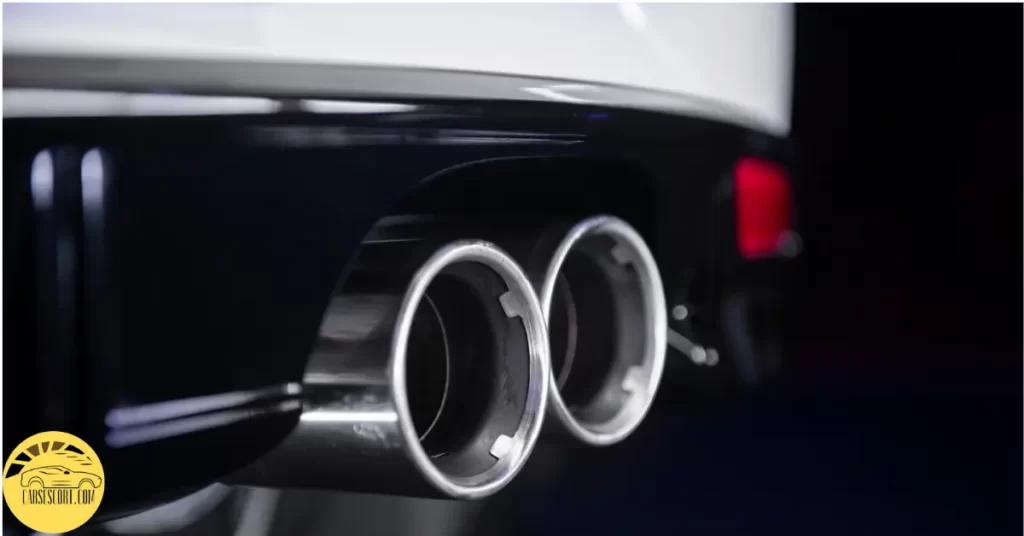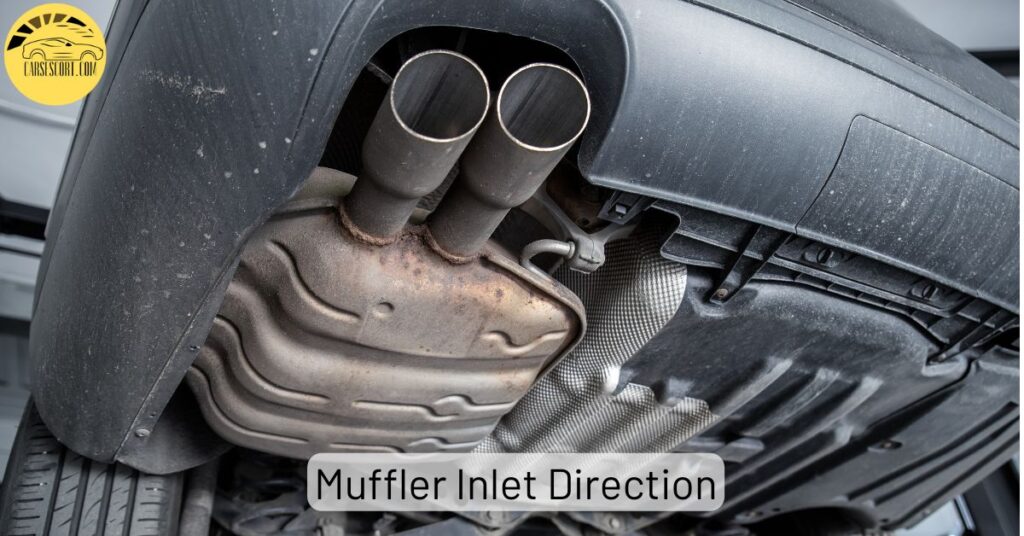If you are an automotive enthusiast or a professional mechanic, you have probably heard of the muffler inlet direction. This is a crucial aspect of installation that can affect your vehicle’s performance. The vehicle muffler is a critical component of the exhaust system and is responsible for reducing noise and emissions.
In most cases, the inlet is located at one end of the muffler, and the direction of the inlet is typically indicated by an arrow or a label on the muffler. It’s essential to ensure that the muffler’s inlet direction matches the direction of the exhaust gas flow and exhaust piping to ensure the proper functioning and performance.
How To Tell Muffler Inlet And Outlet?
- To tell the muffler inlet and outlet, you can look for some visual cues on the muffler itself.
- The muffler inlet is usually located at one end of the silencer and is the opening where the exhaust gases enter. The inlet may be slightly larger in diameter than the outlet and often has a flared or bell-shaped end.
- The outlet is usually located at the opposite end and is the opening where the gases exit. The outlet may be smaller in diameter than the inlet and typically has a straight or angled end.
- Some muffler comes with markings or labels indicating the inlet and outlet end.
- The inlet may have an arrow pointing toward the silencer, indicating the direction of the exhaust flow.

How To Determine Muffler Inlet Direction?
To determine the direction of a muffler, you need to look for markings or arrows on the muffler itself. These markings indicate the proper orientation and should be followed when installing it.
If there are no markings or arrows , you can look at the shape of the muffler to determine its direction. Most mufflers are designed with a tapered or angled end that is intended to face in a specific direction.
The larger end is typically the inlet and should be connected to the exhaust pipe coming from the engine, while the smaller end is the outlet and should be connected to the tailpipe.
You can refer to the manufacturer’s installation instructions or consult a professional mechanic for guidance on installing the silencer in the correct orientation.
Installing incorrectly can reduce performance and increase noise and potentially dangerous leaks.
Muffler Flow Direction
Most mufflers have an inlet and an outlet, and the flow direction should be from the inlet to the outlet. The exhaust gases should enter the muffler through the inlet and exit through the outlet.
The inlet is typically the larger end, and it should be connected to the exhaust pipe coming from the engine. The outlet is the smaller end, and it should be connected to the tailpipe.

Can You Use A Muffler Backward?
Technically, you can use a muffler backward, but it would not work as intended and could cause damage to your vehicle.
The purpose of a muffler or silencer in the car is to reduce the noise produced by the vehicle by allowing the gases to pass through a series of chambers and baffles, which absorb and reflect the sound waves.
If you install the muffler backward, the exhaust gases would flow in the opposite direction, disrupting the flow and creating backpressure, and can lead to several problems, including reduced engine performance, increased fuel consumption, and potential damage to the engine itself.
Why Is It Essential To Install A Muffler In The Correct Direction?
It is important to note that installing a muffler backward can lead to reduced performance, increased noise, and potentially dangerous gases leaks. Therefore, it is crucial to determine the correct flow direction and ensure it is installed in the correct orientation.
It is essential to install in the correct direction for several reasons:
1) Optimal Performance
Mufflers are designed to reduce the noise and increase the efficiency of the exhaust system by using sound-absorbing materials and carefully engineered internal chambers.
When installed in the correct direction, the silencer will function optimally.
2) Noise Reduction
Mufflers create a series of chambers that the exhaust gases must pass through. These chambers are designed to dissipate sound waves and reduce noise.
If it is installed in the wrong direction, the sound-absorbing chambers will not function correctly, and the muffler will not be able to reduce noise effectively.
3) Safety
Installing a silencer backward can lead to dangerous gases leaks, resulting in carbon monoxide poisoning. This odor-free gas can cause dizziness, headaches, nausea, and even death when inhaled.

Signs of improperly installed mufflers
Here are some signs that indicate an improperly installed muffler:
- It may be unable to reduce the noise the engine produces effectively. Increase the volume of the exhaust noise.
- Causing a reduction in the engine’s performance, reduced power, decreased fuel efficiency, and other performance issues.
- Cause excessive vibration in the vehicle, which can be felt in the steering wheel, pedals, or other car parts. Car vibrations can be due to an incorrect fit or a loose connection between the muffler and the silencer pipe.
- Resulting in exhaust leaks, which can be dangerous to the driver and passengers.
- May cause the engine control module (ECM) to detect a problem and turn on the check engine light. Because the ECM monitors the exhaust system’s performance, an improperly installed muffler can disrupt the system’s operation.
You May Also Like To Read:
What Is The Position Of The Muffler?
The muffler is typically located in the exhaust system of a vehicle or machine near the vehicle’s rear. Its primary function is to reduce the noise the engine exhaust gases produce as they exit the vehicle.
The muffler achieves this by creating a series of chambers and baffles that help absorb and dissipate the sound waves the engine produces. The exact location of the can vary depending on the type of vehicle.
How Do Mufflers Cancel Noise?
Mufflers cancel noise by using a series of chambers and baffle to reflect, absorb, and dissipate sound waves the engine produces. When hot exhaust gases exit the engine, they create high-pressure sound waves traveling down the pipe.
As these sound waves enter the muffler, they encounter a series of chambers designed to reflect and redirect the sound waves in different directions, which causes them to collide and cancel each other out.
It contains sound-absorbing materials such as fiberglass, steel wool, or ceramic fibers that help to reduce sound waves further.
These materials are packed into the chambers or wrapped around the perforated pipes inside, causing the sound waves to be absorbed and dissipated as heat.
Does Flow Direction Matter on a Muffler?
Yes, flow direction does matter on a muffler. The correct flow direction is essential for adequately functioning the muffler and the overall exhaust system.
If it is installed backward, the gases will flow in the wrong direction through the muffler.
Failed mufflers can cause a reduction in performance, increased noise, and potentially dangerous leaks. Therefore, it is crucial to determine the correct flow direction and ensure that it is installed in the correct orientation.
FAQ
What is the inlet arrow on a muffler?
The inlet arrow on a muffler indicates the direction in which the exhaust gases should flow through the muffler. It is typically located on the inlet side of the muffler and points towards the engine.
Does a muffler have a direction?
Yes, a muffler has a specific direction in which it is designed to be installed because mufflers work most effectively when the gases flow through them in a specific direction, typically from the engine toward the tailpipe. In addition, many mufflers have a specific inlet and outlet size and shape, which must match the vehicle’s exhaust system to work correctly.
Does exhaust inlet size matter?
Yes, the size of the exhaust inlet on a muffler can impact the vehicle’s performance. If the inlet is too small, it can create backpressure in the exhaust system, reducing engine performance and fuel efficiency. If the inlet is too large, it can cause gases to flow too quickly through, which can reduce the effectiveness in reducing noise and emissions.
Is a straight-through muffler louder?
Generally speaking, a straight-through muffler is louder than a standard one because a straight-through muffler has fewer internal baffles and chambers, which allows the exhaust gases to flow more freely and produce a louder noise. However, some straight-through mufflers are designed with sound-dampening materials or internal baffles that can reduce the overall volume of noise.
My Final Thoughts
What is muffler inlet direction? To determine a muffler’s correct orientation, inspecting the markings or arrows engraved on it is essential. If there are no visible markings or arrows, you can examine the shape to determine the direction it should be installed.
Typically, mufflers have a tapered or angled end designed to face a specific direction.
Installing in the wrong direction can cause the exhaust gases to flow in the opposite direction, resulting in a disturbance in the exhaust flow and creating back pressure.
Affiliate Disclosure: Cars Escort is a participant in the Amazon Services LLC Associates Program. As an Amazon Associate, we earn from qualifying purchases made through affiliate links on our site. Read Our Disclaimer .

